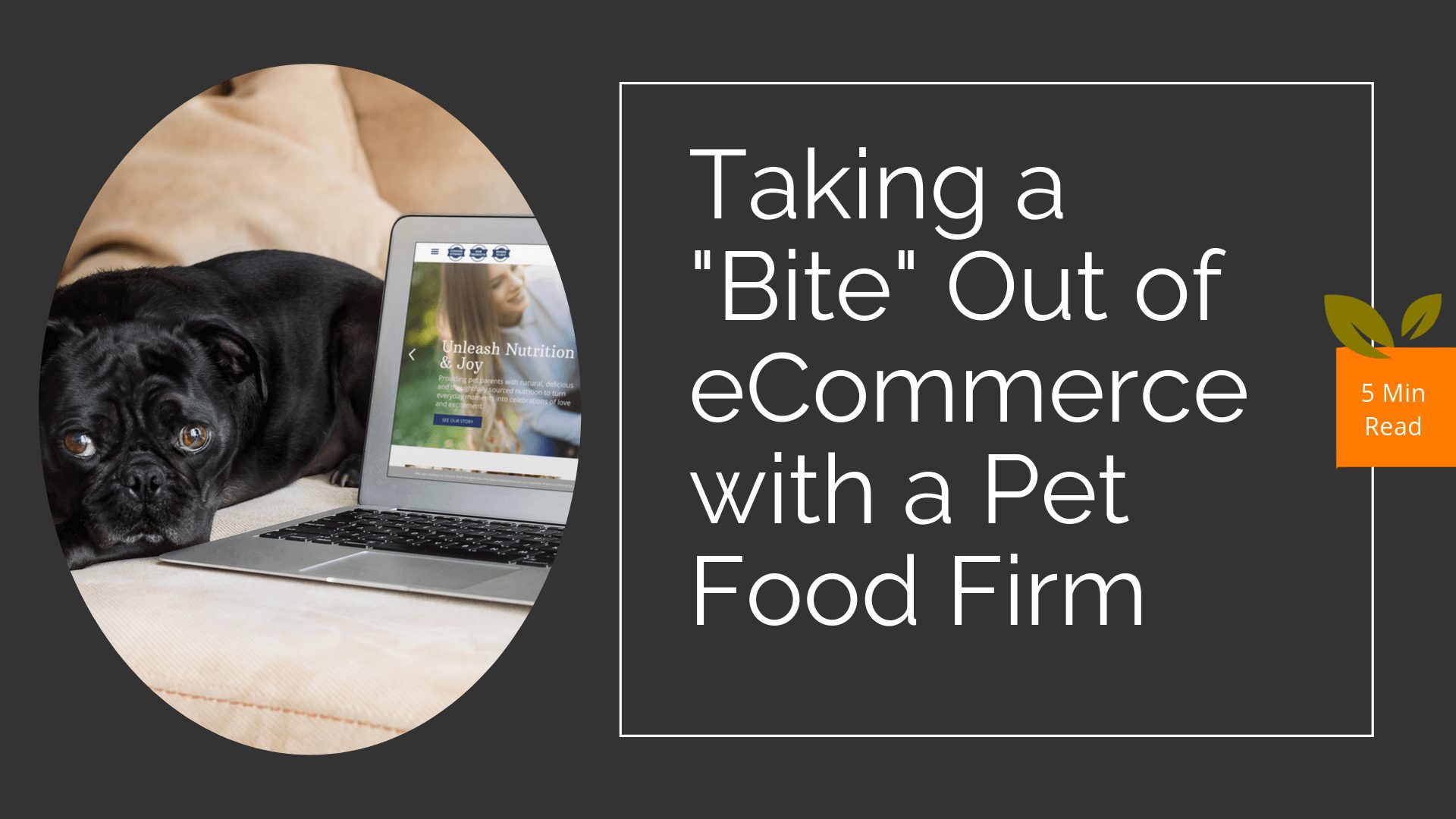Ready, Set, Pizza: Ingredients for a Supreme Website (Infographic)
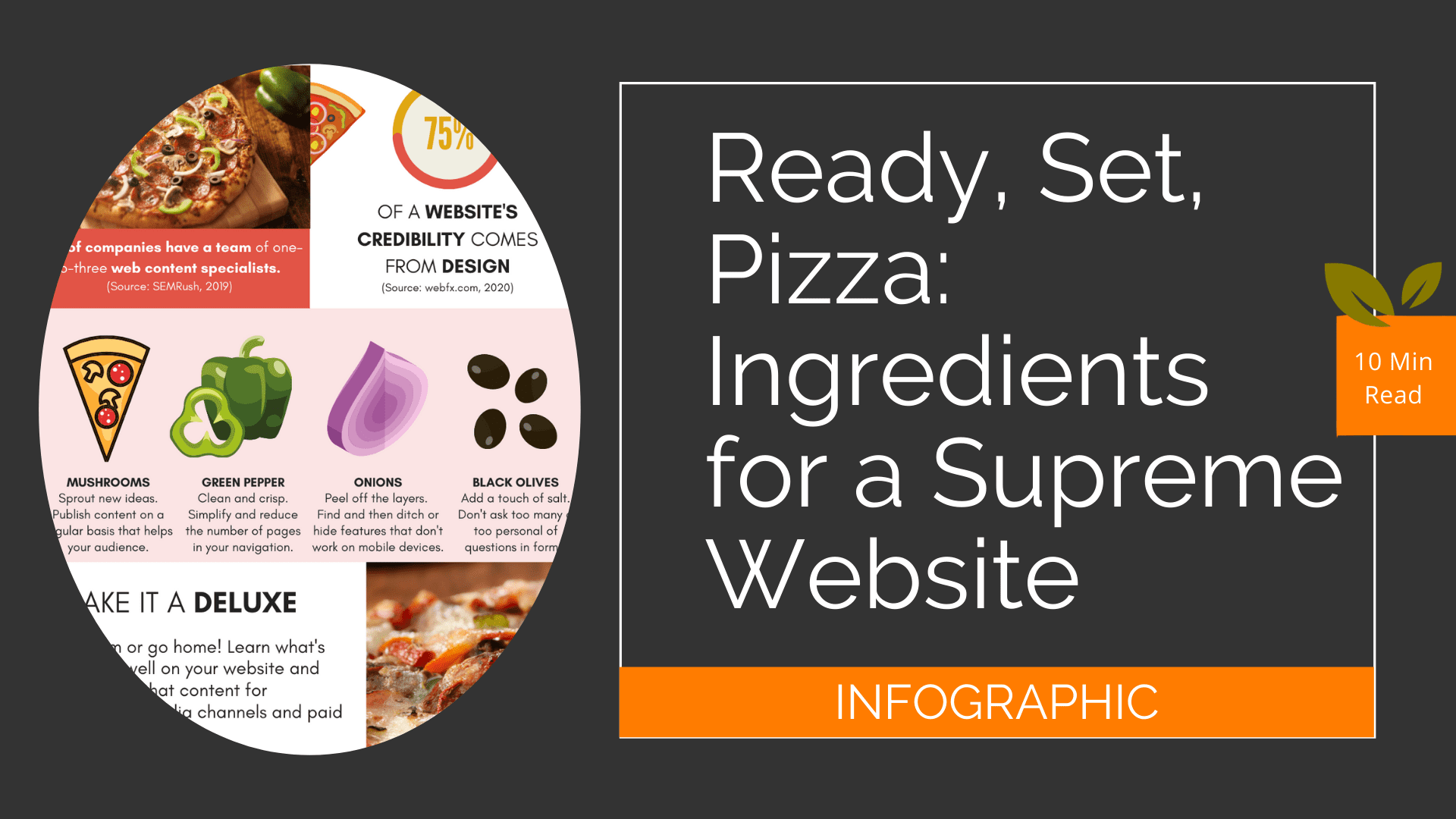
Do you want your website to delight your customers as much as a tasty pizza and convert even more new business? Maybe you need to see how to enhance your website and include 2021's biggest trends in a different way. In this infographic, you'll find the ingredients and design elements you need for a supreme website. Let's get started!
See the Infographic Below
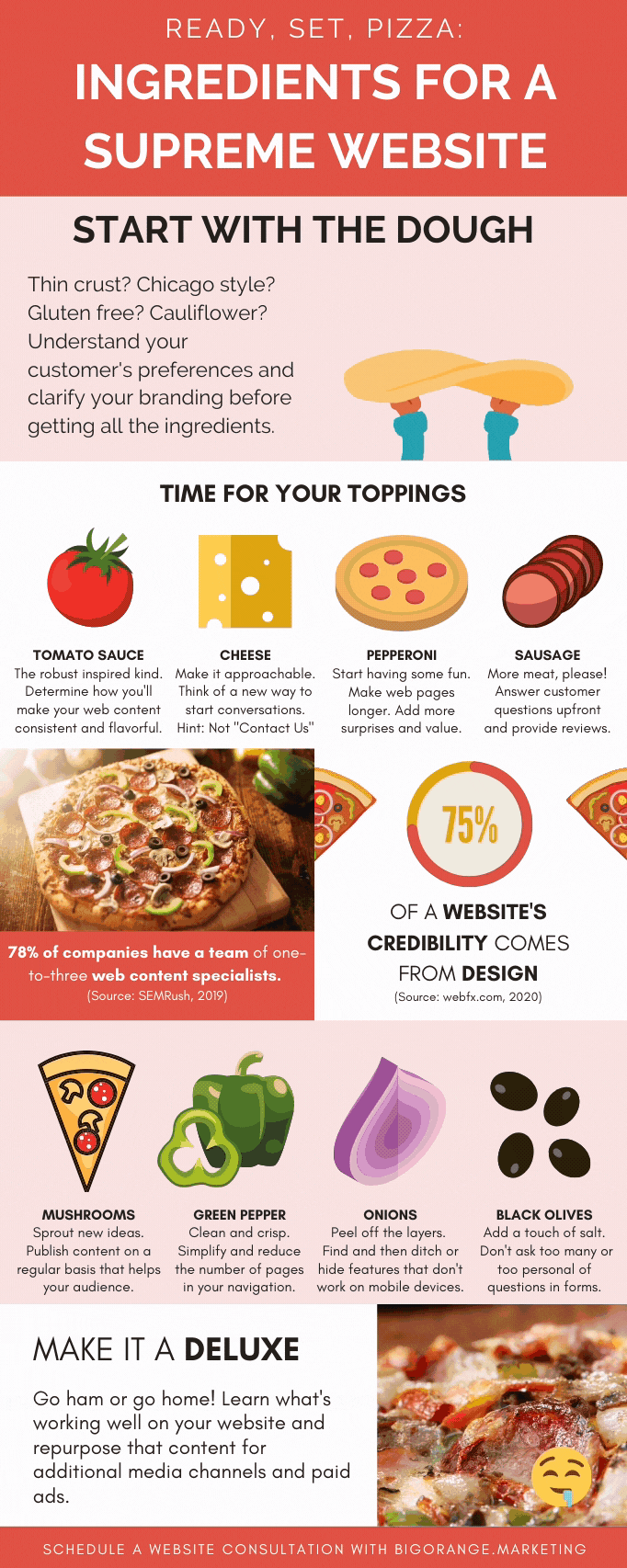
Ingredient #1: The Dough
Your branding is the dough that mends everything together. Are you, your team and your customers aligned on your message, offerings and value? Do you all state what your company does in a clear and unified way? Understanding your customer's preferences, what they are looking for and how your entire brand presents this information is an important step many people forget to take. In some cases, your new or health-conscious offerings need to be front and center. Before you collect any more ingredients and spend a decent chunk of time or money on design, consider using any branding and messaging template or going through an online workshop like StoryBrand.
Ingredient #2: A Robust Inspired Tomato Sauce
The sauce can make or break the pizza and how it tastes. Before you go writing all of your website copy or sending a team to post away via a business blog or brand social media handle, you'll need a way to make your content flavorful and consistent for consumption.
Here are a few tips. Understand where you are creating content and what works best in that place. Use defined parameters (i.e. ideal length, format) and design guidelines for your content. Produce your web, blog, social and any other kind of digital or print content fresh and in small batches. Know what you have available to repurpose and repeat often in your content. Get rid of what's spoiled or no longer consumable.
Ingredient #3: Cheese
Now we're talking. The good stuff! A pizza with cheese is more often approachable than one without (unless you're lactose intolerant like me). Use this idea to develop new ways people can approach your company, interact with your company and start conversations. "Contact Us" is pretty out of date and more than likely where you'll get SPAM or support requests than new customers.
Service-based businesses can start by listing their packages, add-ons, pricing, host webinars for their customers/prospects or drive free consultations and appointments. Some companies may have paid training or workshops available. Bots that point people to the right place or help them quickly find these offerings and take the next step are becoming increasingly popular.
Local companies with consumable items can offer online ordering with free curbside pickup service. Commerce-based companies can use Messenger for live support, Q&A and modern shopping experiences. Instagram images and Facebook pages can become shoppable storefronts, too!
Ingredient #4: Pepperoni
Start having some fun! Make web pages longer. Make them worth consuming, like pepperoni on a pizza. Present more surprises and value during the infinite scrolling experience. Give people the urge and WOW factor upfront to keep scrolling for more. This trend is not going anywhere as mobile becomes the primary traffic source for brands.
Ingredient #5: Sausage
Compliance or your big brother is not in charge of your website, you are. Go ahead and add some more meat. By meat, we mean real customer reviews, testimonials and answers to the most frequently asked questions. Using a website to save time and communicate effectively is a win-win. Are you doing both of these things?
You don't have to expose a customer's full name or company name to do this. Every competitor and leading company in your industry is showing how they are the best (and who they are the best for). So should you. This information helps customers.
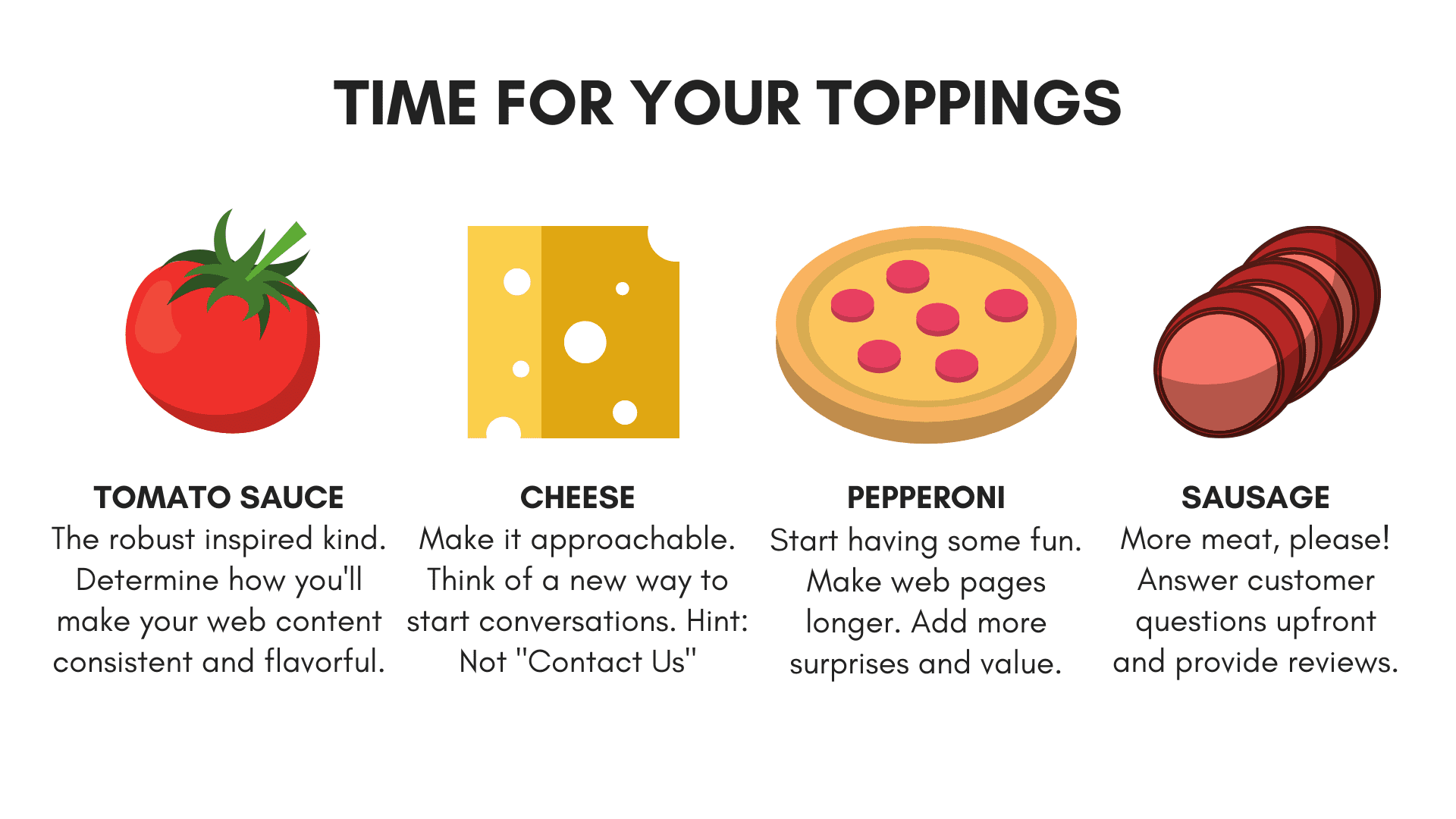
Ingredient #6: Mushrooms
Sprout new ideas. Publish content or resources on a regular basis that aim to inspire your audience. Just like this post that you're exploring and hopefully using to gain inspiration for your website (or dinner) right now.
Any creative website, video, content, social or blogging initiative is better than none. I get it. Writing may be difficult for some people. Video is even harder to get into. Who has the time? Time is not the only issue at play. Maybe you don't have hands-on experience with the topic, industry or even marketing, web design, development and SEO best practices.
You don't have to come up with an idea or speak as an expert to contribute and bring new ideas to life. Think about your strengths and different types of content you can create or outline for someone else to create. Maybe it will be easier to interview someone and make their words easier, more fun, thought-provoking and "less salesy" to consume.
Ingredient #7: Green Pepper
Green peppers are clean, crispy and nutrient-dense. Your website can follow suit by becoming information-dense. Provide as few pages and choices for people as possible.
In my experience, fewer pages are being viewed on websites. More information is "misinformation" than ever before. Longer forms of content with interactive experiences and honest points that can be fact-checked are getting viewed the most.
So knowing this, what pages can you take out of your website's navigation right now? Can you reduce the number of pages under about and services or condense your products further? Adding more pepperoni (the fourth ingredient) can help in this process.
Ingredient #8: Onions
Onions, just like when a person experiences errors on your website, are pungent. To peel off the layers and get chopping for your supreme pizza, test your website. And then test your website some more. Test the speed. Test the performance. Test the scrolling. Test the animation. Test the columns. Test all of the features.
On different browsers. On different devices and screen sizes. On different types of internet connections. Even on your friends' tech. Any testing is better than none! Hide any features that don't work or load from that environment. If you want to stay cost-effective, remove problematic elements from your website.
Ingredient #9: Black Olives
Finally, we need some salt to complete this supreme pizza, but not too much! Asking people for a lot of personal or sales qualifying information upfront in forms is too salty.
In our world, anything beyond a first name and email is pushing it if you are not already a happy customer or have never had a conversation with us. You can progressively collect more information later when the time is right. That, and self-selection tools are an increasingly popular website trend for a reason.
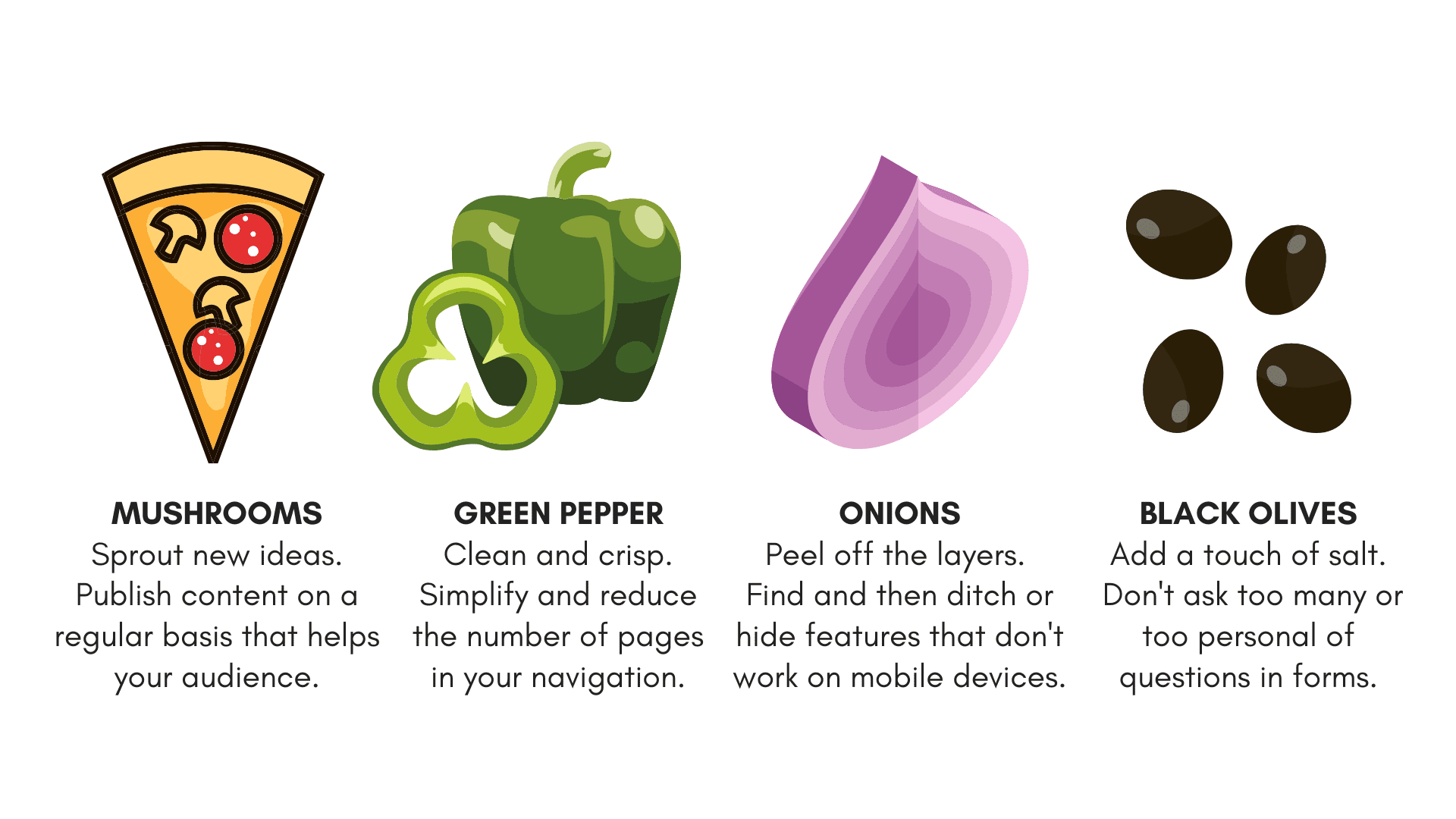
Make it a Deluxe: Add Ham
When it comes to supreme pizzas, web design and optimizing websites for conversions, I like to go ham. Using a free tool like Google Analytics, you can get an idea of what's delivering the most value to your audience. What's working well is worth putting money behind to drive more awareness, traffic and conversions for your company. What gets viewed the most? Where do people spend the most time? This is the content you should repurpose for additional media channels and paid ads. Which are both great subjects for another time!
P.S. — Nearly 80% of companies have a team of one-to-three web content specialists. If you need some new perspective, content and recommendations for your website, schedule a non-salesy (and free) website consultation with BigOrange Marketing. I would love the opportunity to help elevate your website or talk about our shared love of pizza.
What did you think of this post?



